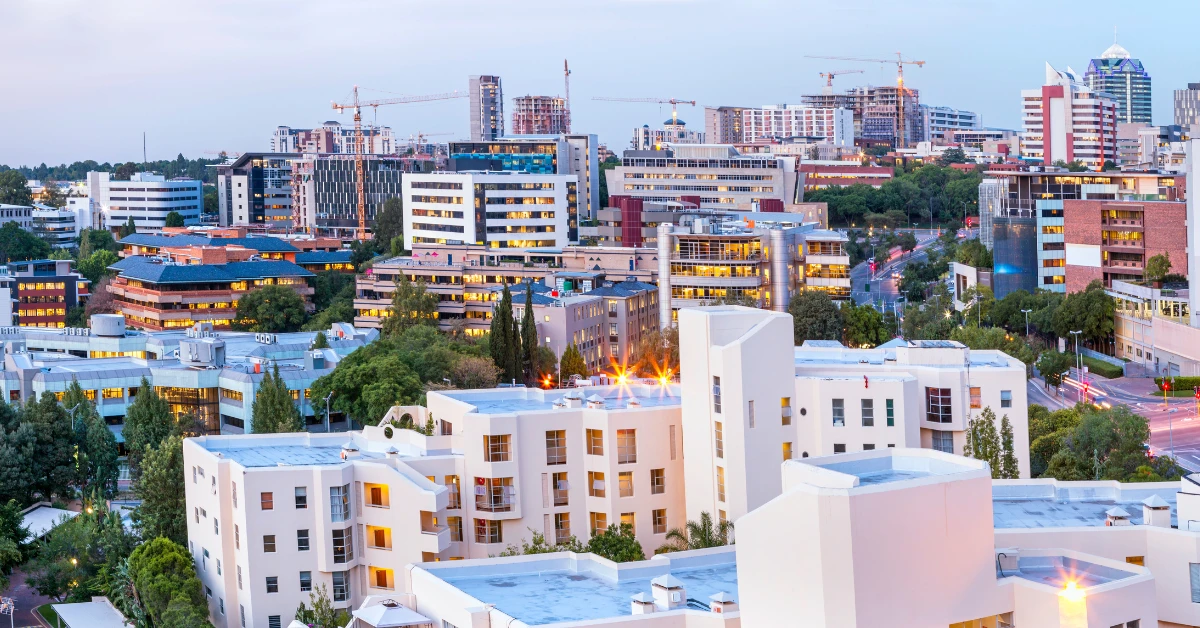Getting The Johannesburg North Attractions To Work
Wiki Article
Indicators on Johannesburg North Attractions You Should Know
Table of ContentsJohannesburg North Attractions - The Facts4 Simple Techniques For Johannesburg North AttractionsFacts About Johannesburg North Attractions RevealedAn Unbiased View of Johannesburg North AttractionsSome Of Johannesburg North AttractionsThe Best Guide To Johannesburg North Attractions
The city owes its location to the existence of a much more valuable source: gold. The city grew on the edge of the Witwatersrand Key Coral reef, a subterranean stratum of gold-bearing quartz-silica corporation that arcs for numerous miles under the Highveld. A lot of the gold mines in the city stopped operation in the 1970s, yet in its day the Witwatersrand gold market represented greater than 40 percent of the world's yearly gold manufacturing.Johannesburg has a pleasant environment. Summer season temperature levels balance regarding 75 F (24 C); winter months temperatures average concerning 55 F (13 C) and just occasionally dip below freezing. The city enjoys regarding eight hours of sunlight daily in both wintertime and summertime. Rain averages regarding 28 inches (700 millimetres) per annum, however the overall differs substantially from year to year.
What rainfall the city gets falls practically specifically in the summer season months, typically in magnificent late-afternoon electric tornados., where many homeowners still count on coal for gas.

About Johannesburg North Attractions
The equilibrium of the city is occupied by whites. Holiday accommodation varies in character and high quality.Physical development, although somewhat limited by transportation, continued swiftly as immigration to South Africa, and Johannesburg specifically, enhanced dramatically. This trouble was addressed in the 1930s when the car was presented in mass manufacturing to South Africa. Automobiles were, generally, confined to the wealthy, and allowed them to transfer to the north of the city and commute right into the centre.
Many inadequate suburbs were combined, with inadequate blacks and whites cohabiting, although the affluent residential areas were typically scheduled for whites. This altered with the election of the National Event in the 1948 political elections, that began to formalise the system called racism. Racism officially marked which suburban areas each race can reside in under the Team Areas Act.
The previous system of eleven phoned number areas was reorganised in 2006. Marshalltown, as seen from the top of the Carlton Centre. The M1 and M2 run behind the structures, and the southern suburban areas expand past the highway limit. The central city of Johannesburg lies within the city's Region F. The number of people living in this link the inner city on a casual basis is unknown, as several are unlawful immigrants. The unemployment, education, and age accounts of the area are all unknown, due to the trouble of obtaining dependable information about the area.
Not known Details About Johannesburg North Attractions
Centred on the CBD, the area includes the suburban areas of Yeoville, Bellevue, Troyeville, Jeppestown, and Berea to the eastern. To the west it infects Pageview (Johannesburg North attractions) and Fordsburg. There are small enterprise zones to the south, such as City West-Denver and Benrose. Around 800,000 travelers travel through the central city daily, and it works as a regional buying node for site visitors from the southerly residential areas. Yeoville and check this Bellevue have a mix of apartment structures and solitary household units on small whole lots. The area is located on a mountainous divide that runs from east to west.
Johannesburg Arena, a training ground for both the Golden Lions and Orlando Pirates, is surrounding. The eastern residential areas of Johannesburg lie in the city's 7th [] and 9th [] areas. The location is also functionally integrated with East Rand border towns outside of the official border of Johannesburg, such as Bedfordview and Edenvale (both part of Ekurhuleni Metropolitan Town).
The Single Strategy To Use For Johannesburg North Attractions
R. Tambo International Airport Terminal). The eastern residential areas are a few of the oldest areas of Johannesburg, there are large neighborhoods of Jewish and various other European histories, most of the populace is English talking. There are three golf links in addition to a number of safeguarded ridges with viewsites. There are a number of well-developed and up-market enjoyment and purchasing locations in the eastern such as the Eastgate Shopping Center and the Greenstone purchasing centre.Initially constructed to house male migrant workers, many have been improved as houses for couples and families. The residential area was not traditionally enabled to develop employment centres within the location, so almost all of its citizens are commuters to other components of the city.
How Johannesburg North Attractions can Save You Time, Stress, and Money.
The N1 Western Bypass connects the northern suburbs with the north-western residential areas. The houses in the north residential areas are mainly formal, with no substantial locations of casual real estate, or housing that lacks an irreversible structure. Although this is a well established area, there is a pattern of land use adjustment from domestic to business, especially along primary arterial roadways and around established nodes.Roads to the east and west are much less well created, as there are no highways travelling in that instructions. Towards the northern border of the city, the density of development reduces, leaving large locations of primitive land around Midrand.
The Greatest Guide To Johannesburg North Attractions
The first residential area to the north of the central city is Parktown, which lies on a hill neglecting the inner city and Hillbrow. It has several well-off residents and Edwardian-style manors, in addition to the Education and Clinical universities of the College of the Witwatersrand. The visit this page huge concrete Charlotte Maxeke Johannesburg Academic Health Center controls the horizon of Parktown.Report this wiki page